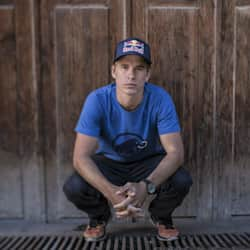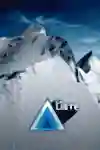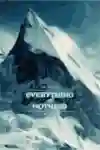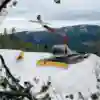
Freeskier Jérémie Heitz talks high-stakes descents from his La Liste films

47 min
La Liste
Over the course two seasons, young phenom Jérémie Heitz tries to ski 15 of the steepest peaks in the Alps.

3 min
La Liste: Everything or Nothing
Jérémie Heitz and Sam Anthamatten venture to ski four of the world’s most impressive mountain ranges.
How to do choose the faces you want to ski?
We choose the most aesthetic faces, where we can show a beautiful descent and beautiful skiing. We don't try to do first descents, but rather ski the face in our style. It needs to be a face that really inspires us, because we sometimes travel several days just to get to the base camp. Then, the conditions and snow have to be perfect.
After skiing the most beautiful peaks in Europe, we were curious to travel the world and taking our skiing to bigger mountains and higher altitudes.
Jérémie Heitz and Sam Anthamatten climbing up the face they'll ski later
© Sherpas Cinema/Red Bull Content Pool
These mountains are nature's finest work, they're real cathedrals. Finding these lines is like finding a needle in a haystack. For these high altitude lines, it's a total gamble
How do you know that a certain face on the other side of the world is in the right condition to be skied?
First, we research the time frame when the particular face is generally in good condition. We then talk to people on the ground: is there enough snow, or is it sheer blue ice? Most of the locals are specialised in mountaineering, though, so for them it's hard to gauge what conditions we need.
We spend about one month in the area, which seems a long time, but is very short for what we need to know and want to achieve. Once on location, we climb and ski smaller faces around the base camp to acclimatise and test the snow. We also always take several mountain guides from Switzerland with us, friends who know the mountains and understand our kind of skiing, whom I trust 100 percent to help us with our decisions.
You have to have perfect technique and you have to be so good that you never have to think about it. That's the type of skier Jérémie is
How do you prepare mentally just before dropping into the face?
The preparation begins much earlier, a long time before that moment. I physically and mentally prepare all year for this type of skiing and we choose our objectives thoughtfully and carefully. I ask myself all the questions I could ask before, so my mind is clear when I stand up there. On the day itself, you climb the face that you want to ski later, so you know where to avoid ice or rocks. If I have the slightest doubt at any moment during this process, I won't ski and we'll come back another day, or not at all. I'm not ignoring or overcoming doubts, but I listen to my intuition and if there's any hesitation, it's a no-go. When I'm on the top of the ridge, I'm nervous, of course, but confident.
How is your team prepared for an accident?
In the first step, we're as safe as possible in the evaluation of risks beforehand. While I bring the technical skiing experience, Sam, my climbing and ski partner, is a certified mountain guide. We couldn't do these projects without each other and without that intuitive trust that connects us.
Secondly, we surround ourselves with a safety team of local sherpas and European guides, because both complement each other in their knowledge. We also took first aid classes with the rescue teams in Valais, to learn about first aid for various mountaineering accidents. We have their first aid kit with us at all times, along with a satellite phone, and medical teams available 24 hours a day. One of our guides who travels with us also has in-depth medical rescue training.
We're also prepared for the fastest extraction possible. We pay for helicopters to be on standby on the crucial days, so they can react immediately should a rescue be necessary.
What’s the difference between your first La Liste film and La Liste: Everything or Nothing?
I received feedback from viewers of the first film who said, 'It's impressive what you do, but if someone isn't a mountaineer, it's hard to understand what you are doing and how you feel up there'. In the first film I was often by myself at the peak, but this time we had a camera team with us all the way up to high camp and all the way up on the ridge. They had to rappel down afterwards.
What was the most touching experience so far?
Definitely the welcome in Pakistan. Due to constant media reports about terror attacks and so on, we arrived with certain fears and preconceptions, but we only met kind, friendly, joyful people, both in the city and the remote mountain villages. We arrived in Lahore during Ramadan and the locals invited us to enter the mosque, which is normally totally forbidden. There were thousands of people praying together, when suddenly an alarm sounded – really a military siren – and they served the Ramadan meal, and the Imam invited us to join. That's one of my strongest memories travelling the world.
The title of the film says it all: you either succeed in the completion of these endeavours, or you come back with nothing the show for the time you spent away from home and the risks you took while you were out there.
Part of this story








